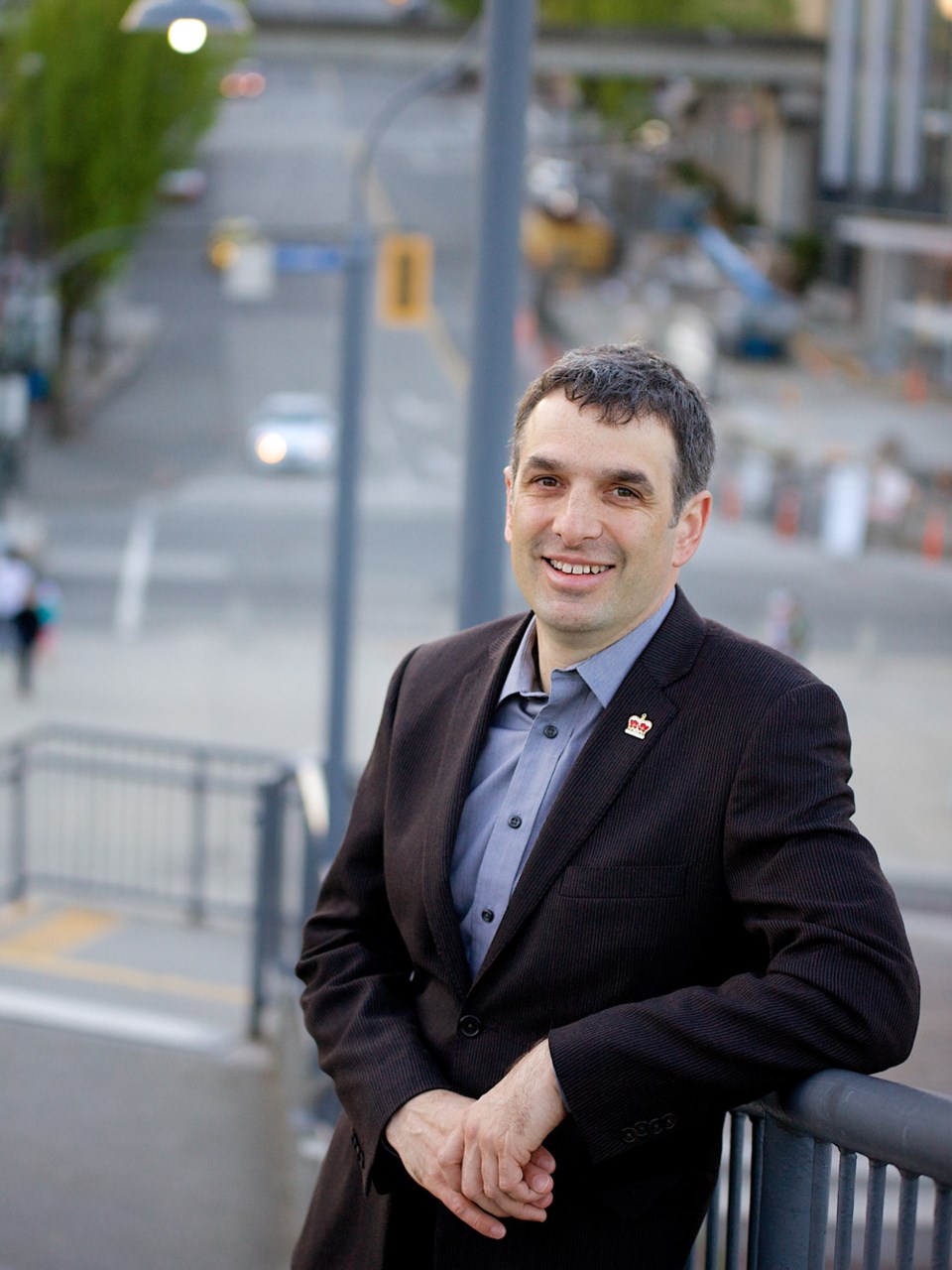Does British Columbia’s Motor Vehicle Act need an update to better reflect modern day use of roads?
The City of New Westminster thinks so. Council will take a motion to the Lower Mainland Local Government Association seeking suport for the Road Safety Law Reform Group of B.C.s’ recommendations for modernizing the Motor Vehicle Act.
“The Motor Vehicle Act was written in 1957 and hasn’t really changed fundamentally since 1957,” said Coun. Patrick Johnstone. “The fact that it’s even called the Motor Vehicle Act – the first change would change it from the Motor Vehicle Act to the Road Safety Act. They want to modernize it and recognize that it doesn’t just regulate motor vehicles; it regulates how we use common, shared public space, and that rights and responsibilities have to be divided up between cyclists, pedestrians and motor vehicle users in different ways, based on the responsibilities and the risks that they pose in the space.”
Johnstone, chair of the city’s advisory committee for transit, bicycles and pedestrians (ACTBiPed), said many of the proposed updates are based on initiatives that are already being done in Ontario and Quebec, as well as recommendations of road-safety advocates from around North America.
According to a staff report, when the Motor Vehicle Act was passed in 1957, motorists were the primary consideration. Since that time, motor vehicle volumes have increased by 1,400 per cent and cycling volumes have increased 300 per cent.
“This has necessitated the revision of the act to make it relevant and reflective of today’s road users and future trends in mobility across the province,” said the report.
The Road Safety Law Reform Group of B.C. is recommending 25 changes to the existing act, including changing the name of the act, adding rules for cyclist and pedestrian safety, and adding fines for violations that threaten vulnerable road users.
Johnstone said the changes address a variety of issues, such as where cyclists should and should not ride.
“There’s also a lot of things about traffic lights and pedestrian safety, including a provincewide shift to 30 kilometres per hour,” he said. “The way they describe it is that 30 km/h should be the default speed limit on local roads that don’t have a centre line. If you can think about dividing up collector roads, like Eighth Avenue from small roads like Blackford Street, roads that don’t have a centre line are local roads and they should have a 30 km speed limit to make them safer.”
New Westminster city council will consider sponsoring a resolution to the Union of B.C. Municipalities in support of modernizing the Motor Vehicle Act and will correspond with the appropriate agencies and ministries in support of this initiative.
Johnstone said one of the main components of the proposed update to the Motor Vehicle Act is to take bylaws that have been introduced in communities across B.C. to improve road safety and make them into provincial laws so are standardized across B.C.
What’s being proposed?
The Road Safety Law Reform Group of B.C., which is comprised of representatives from the legal community, cycling organizations and research institutions, is proposing reforms to British Columbia’s Motor Vehicle Act with a goal of making the roads safer for vulnerable road users – including pedestrians, cyclists and children. Here are some of their recommendations:
* Amend the MVA to include the definition “vulnerable road user”, which means pedestrians and operators of cycles or motorcycles.
* Amend the definition of a cycle to include a bicycle, tricycle, unicycle, quadracycle or similar vehicle, including ones that are power-assisted and require pedaling for propulsion.
* Clarify that all persons on a highway must pay due care and attention, must operate with reasonable consideration for other persons on the highway, and consider where the other persons on the highway are vulnerable road users.
* Empower municipalities to adopt a default speed limit for unsigned highways within municipal boundaries, by bylaw and posting of signs at the municipal boundary. The current default speed limit in the MVA is 50 kilometers per hour; municipalities can currently reduce speed on streets, but it’s a cumbersome process.
* Set the default provincial speed limit of 30 km/h for local streets having no centre line. (Municipalities would be permitted to increase speed limits on local streets on a case-by case basis.)
* Specify that a motor vehicle must be at least one metre away when passing a cyclist or other vulnerable road user when travelling at speed of 50 km/hour or less and at least 1.5 metres away when travelling faster than 50 km/h.
* Provide for the use of red arrow traffic signals to signify when right-turning vehicles are prohibited from turning.
* Clarify when cyclists are permitted to ride on the sidewalk.



